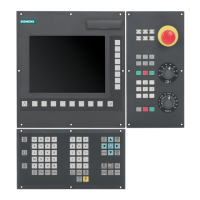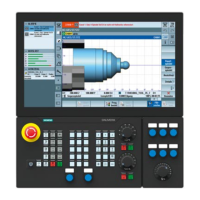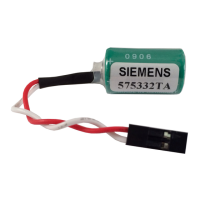Path traversing behavior
9.3 Curve tables (CTAB)
Job planning
9-18 Programming Manual, 03/2006 Edition, 6FC5398-2BP10-1BA0
Activating ASPLINE, BSPLINE, CSPLINE
If an ASPLINE, BSPLINE or CSPLINE is activated within a curve table
CTABDEF( ) ... CTABEND, at least a start point should be programmed before this spline
activation. An immediate activation after CTABDEF must be avoided as otherwise the spline
will depend on the current axis position before the curve table definition.
Example:
...
CTABDEF(Y, X, 1, 0)
X0 Y0
ASPLINE
X=5 Y=10
X10 Y40
...
CTABEND
Depending on machine data MD 20900: CTAB_ENABLE_NO_LEADMOTION, jumps in the
following axis may be tolerated if a movement is missing in the leading axis. The other
restrictions given in the notice still apply.
When creating and deleting tables you can use the definitions of the memory type of the NC.
Deleting curve tables, CTABDEL
CTABDEL can be used to delete the curve tables. Curve tables that are active in an axis
coupling cannot be deleted. If at least one curve table of a multiple delete command
CTABDEL() or CTABDEL(n, m) is active in a coupling, none of the addressed curve tables
will be deleted. The curve tables of a specific memory type can be deleted by the
specification of an optional memory type, see
"Curve table forms (CTABDEL, ... CTABUNLOCK)".
9.3.3 Curve table forms (CTABDEL, CTABNOMEM, CTABFNO, CTABID, CTABLOCK,
CTABUNLOCK)
Function
Other applications of curve tables are:
• Delete in a specific SRAM or DRAM memory type.
• Specify the number of defined and still possible curve tables in the memory type.
• Lock or remove the lock to prevent curve tables from being deleted or overwritten.
• Optional details for selections, such as the deletion of
one curve table, deletion of one curve table area, of
all curve tables in the specified memory,
and lock or unlock overwrite protection.
• Supply, return and check details for the diagnosis of axis couplings such as specific
curve table properties
Determine the number of curve tables, curve segments and curve polynomials.

